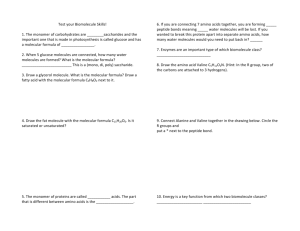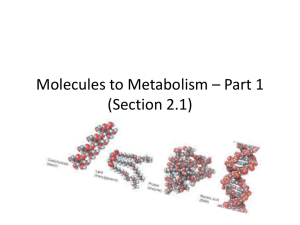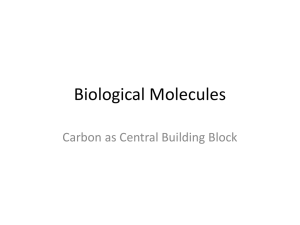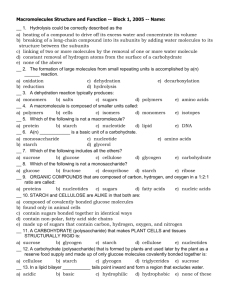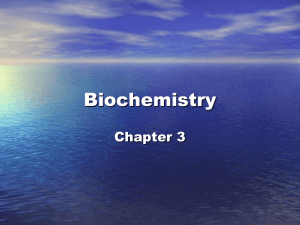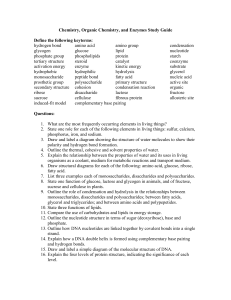2.1 & 2.3-2.4 Molecules of Life
advertisement
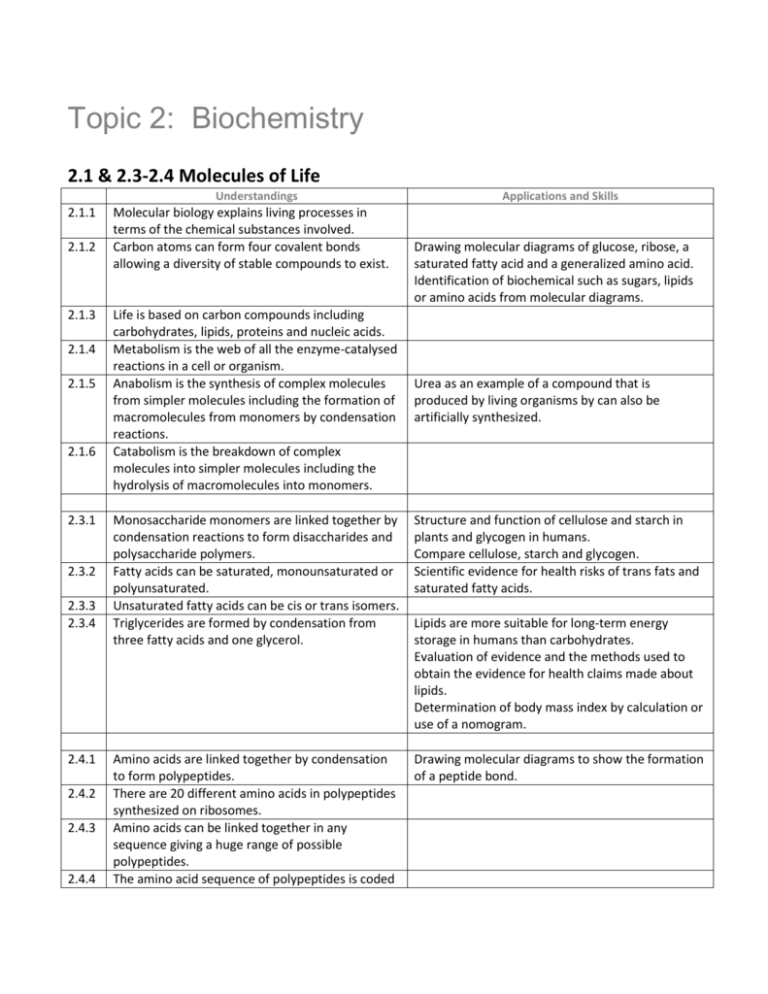
Topic 2: Biochemistry 2.1 & 2.3-2.4 Molecules of Life Understandings 2.1.1 2.1.2 2.1.3 2.1.4 2.1.5 2.1.6 2.3.1 2.3.2 2.3.3 2.3.4 2.4.1 2.4.2 2.4.3 2.4.4 Molecular biology explains living processes in terms of the chemical substances involved. Carbon atoms can form four covalent bonds allowing a diversity of stable compounds to exist. Life is based on carbon compounds including carbohydrates, lipids, proteins and nucleic acids. Metabolism is the web of all the enzyme-catalysed reactions in a cell or organism. Anabolism is the synthesis of complex molecules from simpler molecules including the formation of macromolecules from monomers by condensation reactions. Catabolism is the breakdown of complex molecules into simpler molecules including the hydrolysis of macromolecules into monomers. Applications and Skills Drawing molecular diagrams of glucose, ribose, a saturated fatty acid and a generalized amino acid. Identification of biochemical such as sugars, lipids or amino acids from molecular diagrams. Urea as an example of a compound that is produced by living organisms by can also be artificially synthesized. Monosaccharide monomers are linked together by condensation reactions to form disaccharides and polysaccharide polymers. Fatty acids can be saturated, monounsaturated or polyunsaturated. Unsaturated fatty acids can be cis or trans isomers. Triglycerides are formed by condensation from three fatty acids and one glycerol. Structure and function of cellulose and starch in plants and glycogen in humans. Compare cellulose, starch and glycogen. Scientific evidence for health risks of trans fats and saturated fatty acids. Amino acids are linked together by condensation to form polypeptides. There are 20 different amino acids in polypeptides synthesized on ribosomes. Amino acids can be linked together in any sequence giving a huge range of possible polypeptides. The amino acid sequence of polypeptides is coded Drawing molecular diagrams to show the formation of a peptide bond. Lipids are more suitable for long-term energy storage in humans than carbohydrates. Evaluation of evidence and the methods used to obtain the evidence for health claims made about lipids. Determination of body mass index by calculation or use of a nomogram. 2.4.5 2.4.6 2.4.7 2.4.8 for by genes. A protein may consist of a single polypeptide or mote than one polypeptide linked together. The amino acid sequence determines the threedimensional conformation of a protein. Living organisms synthesize many different proteins with a wide range of functions. Denaturation of proteins by heat or by deviation of pH from the optimum. Rubisco, insulin, immunoglobulins, rhodopsin, collagen and spider silk as examples of the range of protein functions. Every individual has a unique proteome. Cambridge University Press – Biology for the IB Diploma 2.1 – pages 43-48 2.3 – pages 54-58 2.4 – pages 59-61

